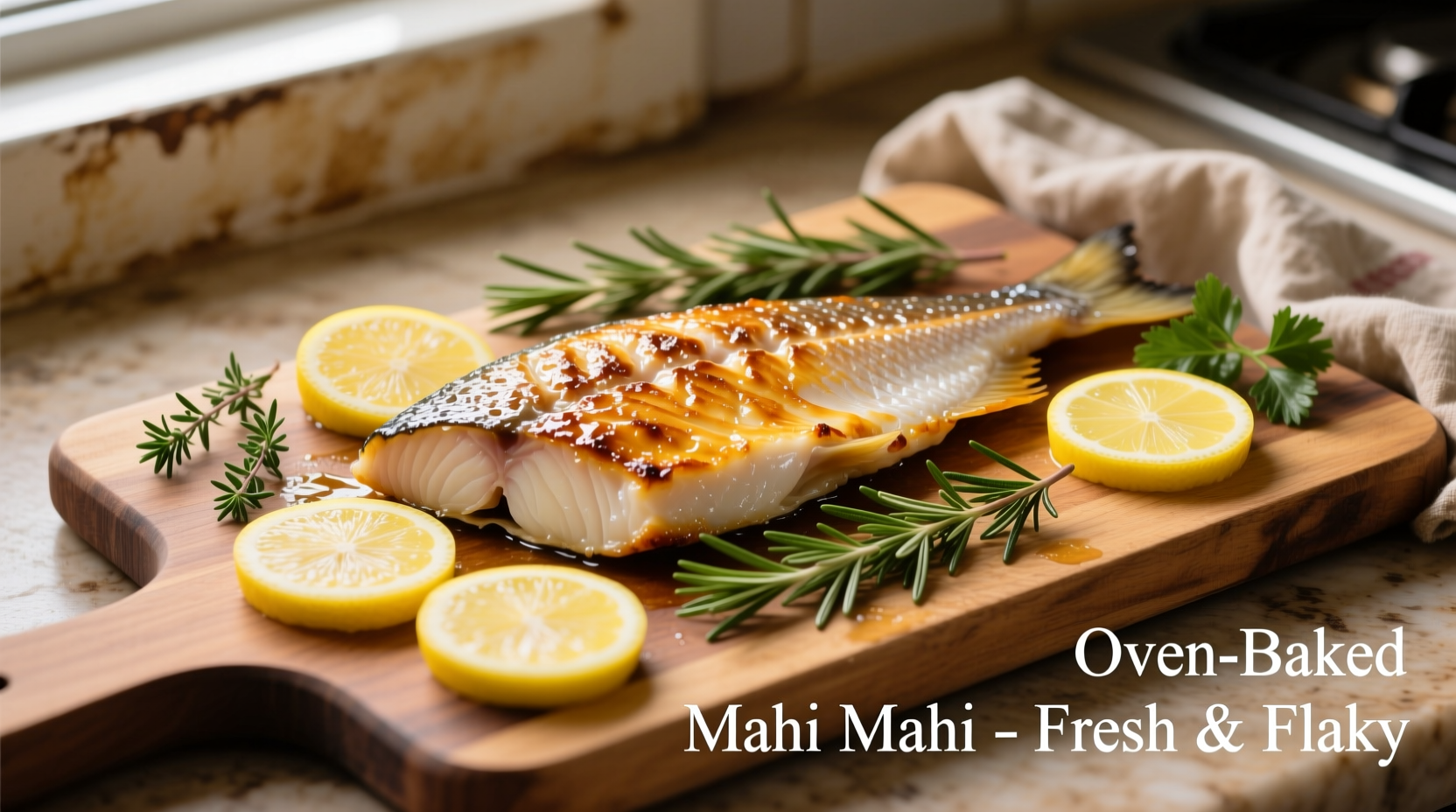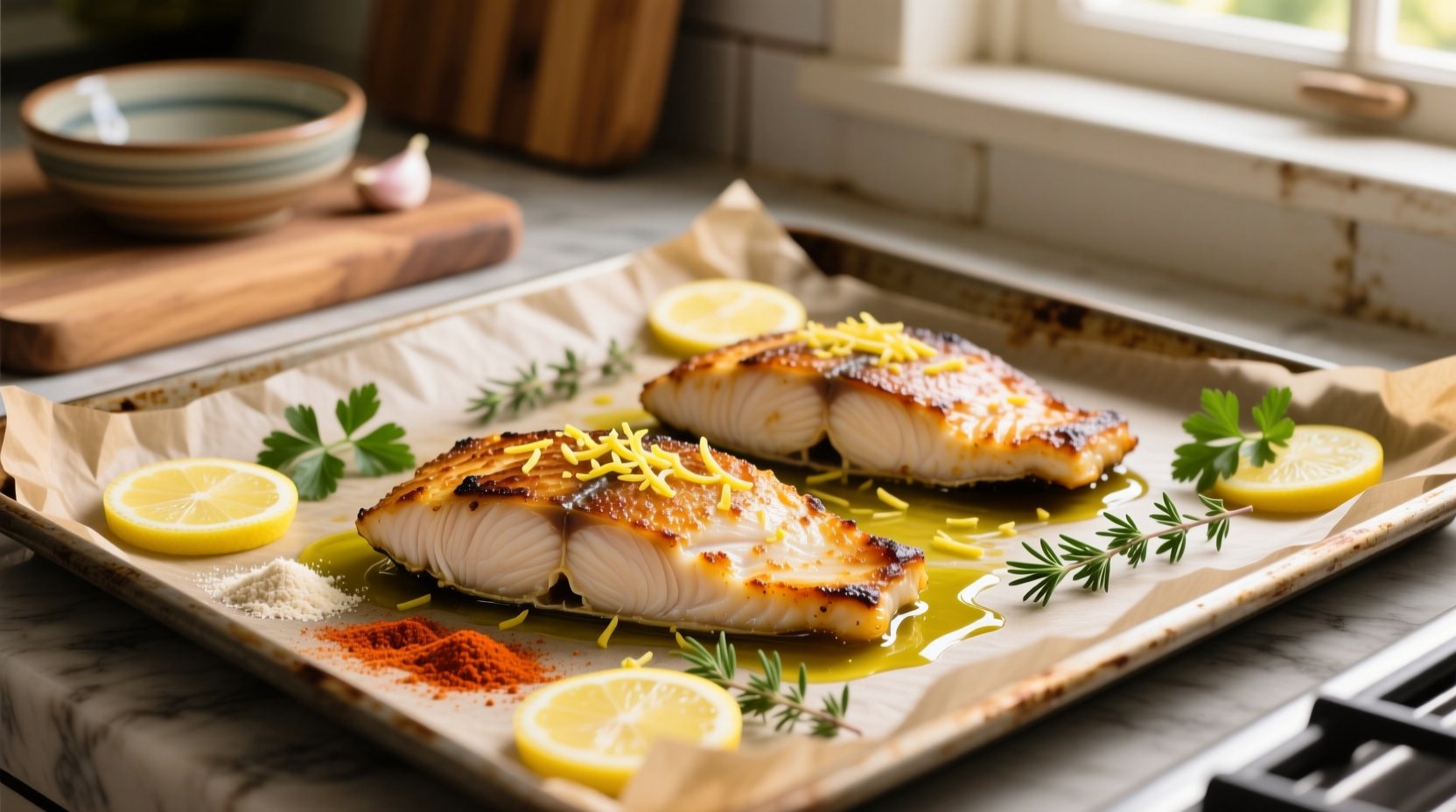Mastering oven-baked mahi mahi transforms this lean, meaty fish into a weeknight dinner hero. Unlike delicate fish varieties, mahi mahi's firm texture holds up beautifully to oven cooking, making it ideal for beginners and experienced cooks alike. When prepared correctly, you'll achieve restaurant-quality results with minimal cleanup—no flipping required, no oil splatters, and perfect doneness every time.
Why Oven Cooking Works Best for Mahi Mahi
Mahi mahi's dense, steak-like texture responds exceptionally well to dry-heat cooking methods. Unlike more delicate fish like sole or flounder, mahi mahi won't fall apart when baked, maintaining its beautiful flake structure. The oven's consistent heat creates an ideal environment for even cooking without the risk of overcooking that often happens with pan-searing.
According to the U.S. Food and Drug Administration, fish should reach an internal temperature of 145°F (63°C) for safe consumption. Oven baking provides the most reliable method to achieve this target without guesswork, especially for thicker cuts.
Essential Preparation Steps for Perfect Results
Proper preparation makes the difference between good and exceptional oven-baked mahi mahi:
- Thawing: If using frozen fillets, thaw overnight in the refrigerator—never at room temperature. This preserves texture and prevents bacterial growth
- Drying: Pat fillets thoroughly with paper towels. Moisture is the enemy of proper browning
- Bone check: Run fingers over the surface to detect any remaining pin bones
- Thickness check: Ideal thickness is 1-1.5 inches. Thicker cuts may need slight timing adjustments
| Fillet Thickness | Recommended Baking Time | Internal Temperature |
|---|---|---|
| 1 inch | 12-15 minutes | 140-145°F (60-63°C) |
| 1.25 inches | 15-18 minutes | 140-145°F (60-63°C) |
| 1.5 inches | 18-20 minutes | 140-145°F (60-63°C) |
Seasoning Combinations That Elevate Mahi Mahi
Mahi mahi's mild, slightly sweet flavor pairs beautifully with bold seasonings. Professional chefs recommend these proven combinations:
- Lemon-herb classic: Olive oil, lemon zest, minced garlic, fresh thyme, salt, and pepper
- Tropical twist: Coconut oil, lime juice, cilantro, and a pinch of cayenne
- Smoky paprika: Avocado oil, smoked paprika, garlic powder, and onion powder
Apply oil-based seasonings directly to the fish surface—this creates a protective layer that prevents drying. For best results, let seasoned fish rest 10 minutes before baking to allow flavors to penetrate.

The Foolproof Baking Method
Follow these precise steps for consistently perfect results:
- Preheat oven to 400°F (200°C) with rack positioned in the center
- Line a baking sheet with parchment paper or lightly oil a glass dish
- Arrange fillets in a single layer with space between them
- Bake for 12-20 minutes depending on thickness (refer to timing chart)
- Check for doneness at minimum time using a thermometer
Food science note: The 400°F temperature creates the ideal Maillard reaction for browning without overcooking the interior. Lower temperatures risk steaming the fish, while higher temperatures cause rapid moisture loss.
How to Tell When It's Perfectly Done
Don't rely solely on timing—use these visual and tactile indicators:
- Flaking test: Gently press center with fork—should separate into clean flakes
- Color change: Translucent appearance becomes opaque throughout
- Internal temp: 140-145°F (60-63°C) measured in thickest part
- Surface texture: Golden brown with slight resistance when pressed
Remember that fish continues cooking after removal from oven (carryover cooking). Remove at 140°F (60°C) for perfect 145°F (63°C) final temperature.
Troubleshooting Common Issues
Even experienced cooks encounter these challenges:
- Dry fish: Usually caused by overcooking or insufficient oil. Solution: Reduce time by 2-3 minutes and ensure proper oil coating
- Sticking to pan: Inadequate surface preparation. Solution: Use parchment paper or properly season cast iron
- Uneven cooking: Fillets of varying thickness. Solution: Arrange thicker parts toward oven center
- Bland flavor: Under-seasoning. Solution: Season both sides and let sit 10 minutes before baking
Serving Suggestions for Maximum Enjoyment
Pair your perfectly baked mahi mahi with these complementary sides:
- Citrus-herb quinoa salad with avocado
- Roasted sweet potatoes with garlic
- Mango-avocado salsa for tropical flair
- Simple arugula salad with lemon vinaigrette
For sauce options, try a quick cilantro-lime crema (Greek yogurt, lime juice, fresh cilantro) or a warm lemon-butter sauce. Serve immediately after resting 3-5 minutes for optimal texture.
Storage and Reheating Guidelines
Proper handling maintains quality for leftovers:
- Refrigeration: Store in airtight container for up to 2 days
- Reheating: Warm in 300°F (150°C) oven for 8-10 minutes—never microwave
- Freezing: Not recommended as texture deteriorates significantly
According to USDA food safety guidelines, cooked fish should be consumed within 3-4 days when properly refrigerated. When in doubt about freshness, trust your nose—spoiled fish has a distinctly sour or ammonia-like odor.











 浙公网安备
33010002000092号
浙公网安备
33010002000092号 浙B2-20120091-4
浙B2-20120091-4